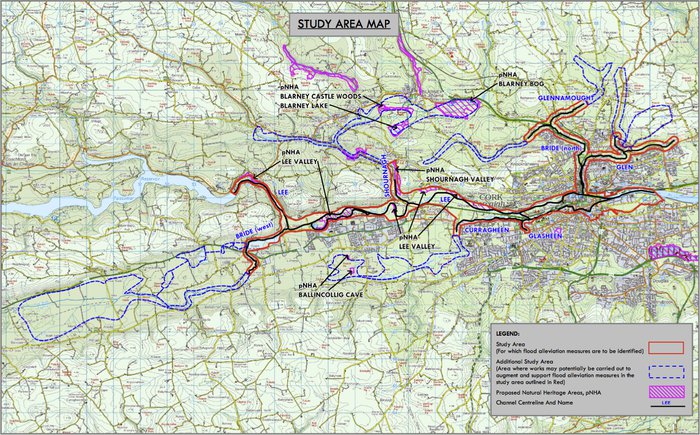The Evolution of the Scheme
The detailed consideration of flood risk in Cork goes back to 2006 when the Lee was chosen as a catchment for a pilot Catchment and Flood Risk Management Strategy (CFRAMS).
Subsequently, the current design team were engaged to build upon the findings of the CFRAMS and develop a viable, sustainable and effective flood relief Scheme for Cork.
The Lower Lee Flood Relief Scheme represents the result of over a decade of study utilising cutting edge technology to review the most recent data and science, alongside local community needs, and the current and future climate context.
Due to the complex nature of the flood risk in Cork, which can arise from combinations of river and tidal flooding, including the opportunity available with the presence of the two hydroelectric reservoirs, a team of multi-disciplinary experts in the flood risk management field was engaged to ensure that the Scheme design represents the optimum solution for Cork, one which is robust, future proofed, sustainable, environmentally positive and which takes the opportunity to deliver wider placemaking benefits beyond flood relief.
Since the Scheme was statutorily exhibited in 2017, a significant body of additional rainfall and river gauge data has become available, further OPW coastal studies have been completed and the accuracy and resolution of weather forecasts have improved. As a result of this additional data, and to ensure that the design of the Scheme is robust and based on the best available data, a number of additional work packages have been completed in the last few years to further enhance the Scheme.
This work includes a comprehensive update of the tidal level analysis. The impact on water levels of surge from factors such as wind speed and direction, atmospheric pressure and local wave affects (known as seiche) were analysed in detail. This work has now brought the coastal hydrology up to date and provides great confidence in the coastal defence levels required for this scheme.
In addition to the above, the OPW and its consultant have undertaken a full recalibration of the flood forecasting system and its proposed role in further optimising the operation of the ESB dams during flood events. This has further enhanced the performance of the system to further optimise the management of the dams for flood risk management.










